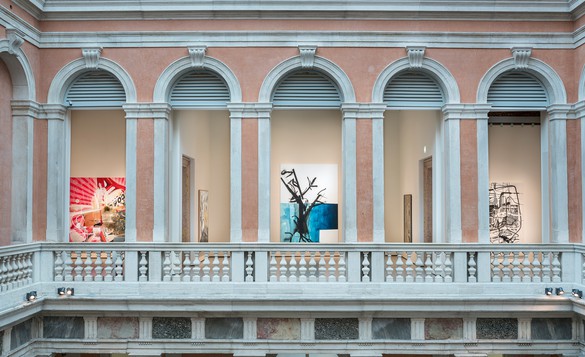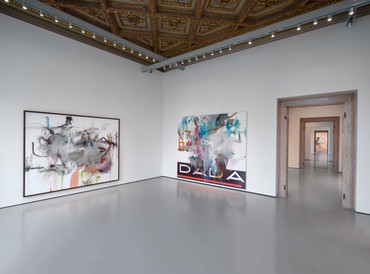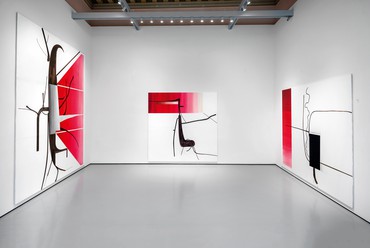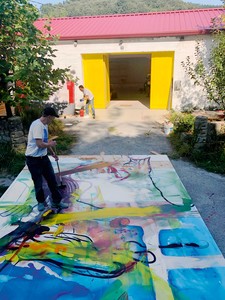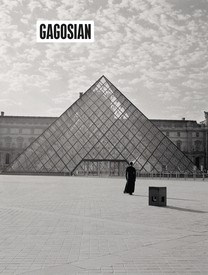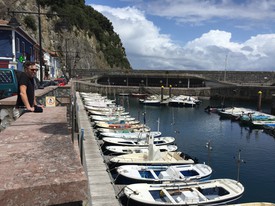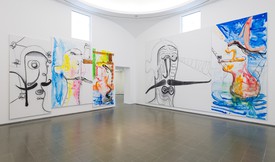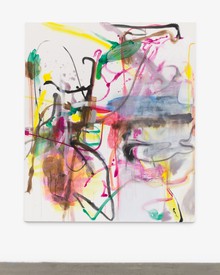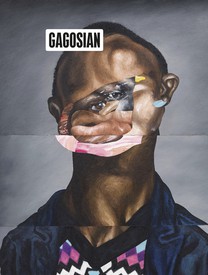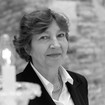
Caroline Bourgeois has been curating exhibitions of the Pinault Collection since 2007, including Passage du temps (2007) at Lille’s Tripostal; Prima Materia (2013–14) with Michael Govan at Punta della Dogana, Venice; The Illusion of Light (2014–15) at Palazzo Grassi, Venice; and Debout! (2018), at the Couvent des Jacobins and the Musée des Beaux-Arts, Rennes. Photo: Matteo De Fina
Albert Oehlen is a painter who challenges classical categorization, aesthetics, thoughts, or approaches to painting. He varies his subject matters as well as the painting methods he uses. In doing so, he opens windows on the very definition of what a painting can be. He moves from abstraction to figuration, from collage to Computer Painting, from Finger Malerei (a work painted with the fingers) to the brush, from gray paintings crisscrossed by brushstrokes to multicolored abstract ones.
I often heard about him that he is a sort of punk, always radically questioning a posture, a sacred rapport with art. Starting with something akin to revolt, refusing all clichés and relying on a deep sense of humor, he questions all our references: our relationship to nature, portraiture, abstraction with its heroic references, and collage when he uses advertising posters of popular products. His works call us to go back to them several times and to always find new ways to read them. Many artists refer to him as their hero, from Christopher Wool to Wade Guyton and Julie Mehretu, for example, because of his radical relation to the work and the way in which he always displaces the subject, both in the way he paints and in the materials he uses.
In order to grasp his work, we built on the relationship with music, and specifically free jazz, as a metaphor for his approach. The free-jazz musician is a virtuoso who, in each of his improvisations, risks failure in order to, maybe, find a new sound, a new experience of music. Cows by the Water, featuring works from 1980 to today, seeks to use the artist’s relationship with music as a key to follow his trajectory and his work from their beginnings. In selecting the pieces, we also chose to display those more rarely seen. We started from his most recent work and mixed different time periods. The angle is thus to have an original display, which is not chronological but rather based on a syncopated rhythm, mixing genres and years. The exhibition layout, inspired by the artist’s practice, is meant to be a metaphor for his own approach, in which rhythm, improvisation, repetition, and the density and harmony of sounds can illustrate artistic gestures.
Oehlen is an artist who likes persevering. If certain themes reappear throughout his work, it is to delve deeper, to test his own work, to tackle these themes differently each time, and to always try again. For example, in Elevator Painting he combines eight paintings from 2016 and one from 1996.
I am very interested in improvised music, of course. First of all, because I like it, and also because my painting—particularly what I am doing now, but also the older work—always suggests that it was done quickly, and is therefore comparable to improvised music.1
As we look through Oehlen’s work, some approaches return as punctuation, for example in the Computer Paintings series, in which a digital image is silkscreened onto a canvas, then reworked in oil paint, a method he first adopted in 1992, or in his series of trees. By using a recurrent theme, it seems the artist is using a simple way of giving his work a framework of reference, which allows him to push his work further without being preoccupied by the “subject.”
Normally the computer helps you to do something that otherwise you wouldn’t do. Computers open a window onto the future. Here things are reversed. The painter corrects the pixels, and ultimately the computer image gives rise to a hand-painted picture.2
His paintings are complex and cannot be reduced to a single explanation or description. Oehlen thinks from the start that any subject can be addressed; that even if we start with a figurative representation, it will eventually lead us toward abstraction, perhaps the ultimate form of his work. Oehlen ends up asking: is this (this painting) a painting? The exhibition proposes to look at the different experimentations carried out by the artist throughout his career, in which he demonstrates that the development and realization of a painting matter more for him than the subject of the work itself.
Freedom for me means playing. It does not mean to be in a void and make crazy moves. It means to play with your own rules.3
Oehlen’s research expands in multiple directions, and in his interviews over time he has given some of his references (Salvador Dalí, John Graham, Willem de Kooning, Philip Guston, Francis Picabia, Sigmar Polke, Jackson Pollock, Robert Rauschenberg, Georg Baselitz . . . ), which show his taste for singularity, far beyond “good taste.”
At the start of his career, in the 1970s, his painting—and more broadly, the whole practice of painting—was fiercely criticized. Using a range of media (mirrors, cloth, posters, etc.), he eventually freed himself from the most strident usages and direct subjects to approach abstraction in the early 1980s, taking ever greater risks.
The same concerns seem to reappear throughout his work, in particular those related to abstract painting, to questions of color, form, meaning, but always pushing their treatment further. The Computer Paintings series, the Conduction series (inspired by orchestra conductors), the so-called Trees series, or even the Finger Malerei series are all examples of a work on lines, gestures, movements, but which put us in a paradoxical position between expression (subjective, heroic) and commentary (thoughtful and controlled).
I am convinced that I cannot achieve beauty via a direct route; that can only be the result of deliberation. Otherwise, we would be back at the pure sound that creates happiness—which I don’t believe in. That’s the interesting thing about art: that somehow, you use your material to make something that results in something beautiful, via a path that no one has yet trodden. That means working with something that is improbable, where your predecessors would have said “you can’t do that.” First you take a step toward ugliness and then, somehow or other, you wind up where it’s beautiful.4
Oehlen also uses the collage technique, which brings the street and advertising into a new pictorial relationship in which the manipulation of our gaze is reduced. No seduction; no reliance on color to manipulate you; no affirmation of acquired knowledge; no reliance on these techniques; but instead, constant transcendence. Oehlen pays more attention to method than to gestures and thus avoids the trap of “easy” pieces. On the contrary, his work requires the viewer to pause, to take time to look, feel, and think.
He also incorporates an element of random chance, for instance when he uses colors he still has in store rather than buying what he doesn’t have. He has a flair for paradox, as evidenced by his Computer Paintings, inkjet printed and then painted, and his collages that become “paintings.” Oehlen has been refining these qualities since his early days, but he keeps them both at a distance and close, aware that there are several “histories of painting” and of the relationship with reality. His work also alludes to the realities of the world, although never in a demonstrative manner, but rather as an echo. In doing so, Oehlen leads us to constantly push back our limits and our preconceptions and to let us be guided by a hitherto unknown music.
1Albert Oehlen, quoted in Andreas van Dühren, Albert Oehlen, Elevator Painting (New York: Gagosian Gallery, 2017).
2In Albert Oehlen (Carré d’Art–Musée d’art contemporain de Nîmes, 2011).
3Oehlen, in an interview with John Corbett, 2013, in Albert Oehlen: Fabric Paintings (New York: Skarstedt Gallery, 2014).
4Oehlen, in an interview with Rainald Goetz, published in Monopol (2010).
Cows by the Water: Albert Oehlen, Palazzo Grassi, Venice, April 8, 2018–January 6, 2019
Text originally published in Pinault Collection Magazine, no. 10 (April–September 2018), republished here with kind permission
Artwork © Albert Oehlen. Photos: Matteo De Fina © Palazzo Grassi
